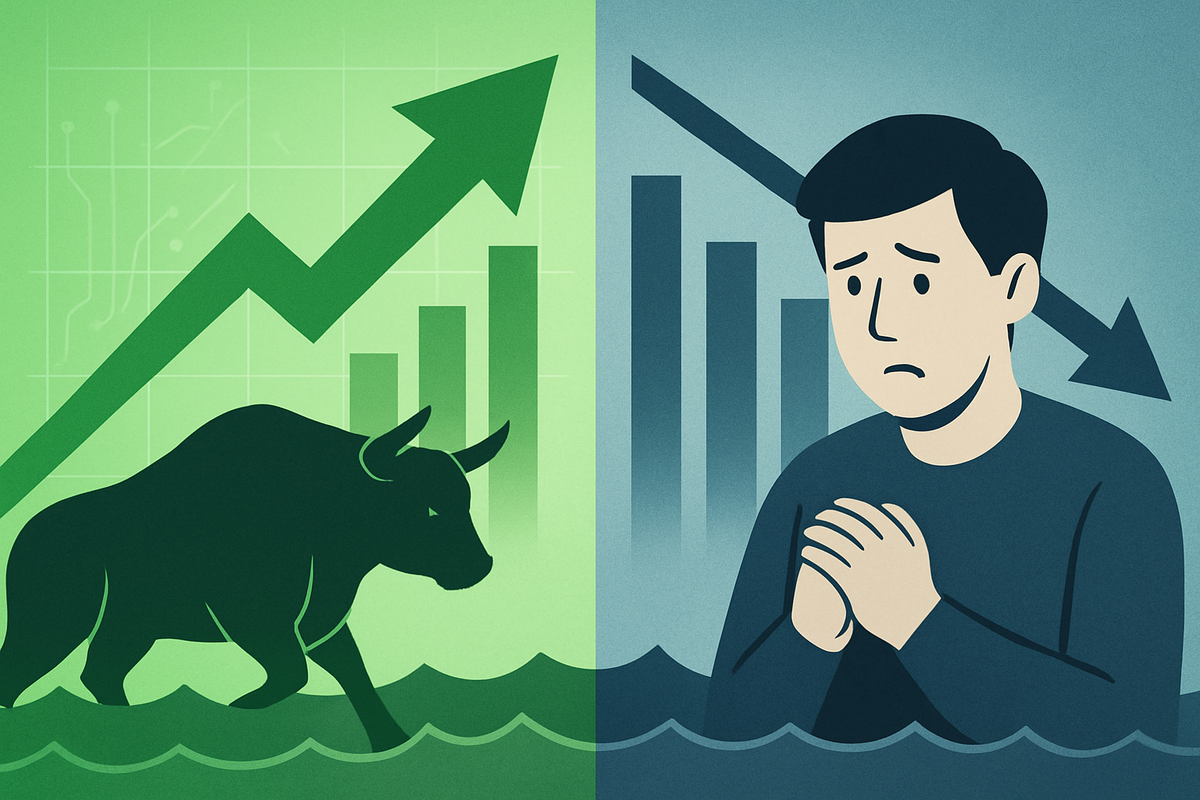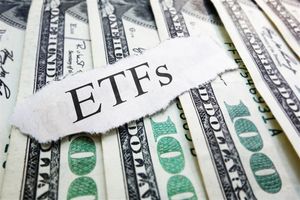
New York, NY – October 29, 2025 – As the broader S&P 500 index soars to near all-time highs, propelled by an "AI frenzy" and a supportive Federal Reserve, the Consumer Discretionary sector finds itself in a more precarious position. While the overall market basks in bullish sentiment, driven by technology giants like Nvidia (NASDAQ: NVDA) reaching unprecedented valuations, companies reliant on optional consumer spending are grappling with a complex web of headwinds, including softening consumer confidence, persistent inflation, and a weakening labor market. Today's closing bell report highlights a sector caught between the tailwinds of a strong stock market and the turbulent crosscurrents of a cautious consumer.
The juxtaposition is stark: on one hand, the S&P 500's ascent suggests a robust economic environment, with the Federal Reserve implementing its second interest rate cut of the year, bringing the benchmark lending rate to between 3.75% and 4%. This accommodative monetary policy typically fuels market liquidity and growth, creating a "wealth effect" that can theoretically bolster consumer spending. However, Fed Chair Jerome Powell's cautious remarks, indicating that further rate cuts in December are "not a foregone conclusion," introduced a note of prudence into an otherwise exuberant market. For the Consumer Discretionary sector, which thrives on consumer optimism and disposable income, this mixed signal from the Fed, coupled with other economic anxieties, paints a picture of uncertainty.
Detailed Market Dynamics and Consumer Headwinds
Despite the overarching bullishness of the S&P 500, the Consumer Discretionary sector is contending with a deteriorating consumer landscape. Data released today underscores this shift: the Conference Board Consumer Confidence Index experienced a slight decline in October to 94.6, while the University of Michigan Consumer Sentiment Index fell for the third consecutive month, settling at 53.6. These figures collectively signal a growing pessimism among consumers regarding future business conditions and job security, directly impacting their willingness to spend on non-essential goods and services.
Adding to the economic strain, persistent inflation remains a significant concern. Although the September Consumer Price Index (CPI) reported a 3% annual inflation rate—below economists' expectations but still above the Fed's 2% target—consumers continue to feel the pinch of elevated prices. The average 12-month inflation outlook edged up to 5.9% in October, leading many households to prioritize essential expenses like housing, energy, and utilities over discretionary purchases. This sentiment is translating into tangible reductions in spending, with close to 40% of consumers planning to reduce holiday gift spending and over half (54.5%) intending to forgo travel during the upcoming holiday season. Payment processors, including PayPal (NASDAQ: PYPL), have observed "softer" discretionary spending patterns, characterized by smaller transaction sizes and decreased average order values, further confirming the shift in consumer behavior.
The labor market, a crucial driver of consumer spending, is also showing signs of softening. Major corporations across various sectors, including Amazon (NASDAQ: AMZN), UPS (NYSE: UPS), Target (NYSE: TGT), Nestle (SIX: NESN), and Microsoft (NASDAQ: MSFT), have announced significant layoffs. This trend contributes to widespread consumer anxiety about job prospects and future income stability. Furthermore, an ongoing federal government shutdown, which commenced on October 1, 2025, is exacerbating economic uncertainty. The shutdown has delayed the release of critical economic data, such as employment reports and GDP figures, forcing the Federal Reserve to rely on alternative data sources. Projected to cost the U.S. economy between $7 billion and $14 billion, the shutdown is a significant drag on both sentiment and economic activity, with potential implications for President Trump's sweeping tariffs and trade policies, which could further impact consumer purchasing power if increased import costs are passed on.
Companies Navigating the Shifting Sands
The current economic climate presents a complex scenario for companies within the S&P 500 Consumer Discretionary sector, creating both potential winners and losers. Companies heavily reliant on big-ticket purchases and optional spending are likely to face significant headwinds. For instance, electric vehicle manufacturers like Tesla (NASDAQ: TSLA) could see demand soften if consumer confidence wanes and financing costs remain a factor, despite the Fed's recent cuts. Similarly, home improvement retailers such as Home Depot (NYSE: HD) might experience reduced sales of non-essential renovations as consumers tighten their belts. Travel and leisure companies, including those in the airline and hospitality industries, face challenges given the widespread intention to forgo holiday travel.
Conversely, companies offering value-oriented products or services, or those with strong brand loyalty and diversified revenue streams, might prove more resilient. Fast-food chains like McDonald's (NYSE: MCD) could benefit as consumers trade down from more expensive dining options. E-commerce giants such as Amazon (NASDAQ: AMZN), while facing headwinds from overall reduced discretionary spending, might still capture market share due to their convenience and competitive pricing, especially if they can leverage their essential goods offerings. Luxury brands, paradoxically, could also see continued demand from high-income earners who are less affected by economic downturns and benefit disproportionately from the "wealth effect" of a booming stock market. The ability of companies to adapt to changing consumer priorities—focusing on value, durability, or essential needs—will be crucial for navigating this period.
Wider Significance and Broader Trends
The current dynamics within the Consumer Discretionary sector are more than just a momentary blip; they fit into broader economic cycles and shifts in consumer behavior. The divergence between a buoyant stock market and cautious consumer sentiment is a historical pattern often observed during periods of elevated inflation or economic uncertainty. It highlights a potential disconnect between asset prices, which can be driven by institutional money and specific sector booms like AI, and the everyday financial realities of the average consumer. This situation could signal a broader trend of consumers becoming more discerning and less impulsive in their spending habits, a shift that could persist even after economic conditions improve.
The ripple effects of reduced discretionary spending are far-reaching. Industries such as advertising, logistics, and manufacturing, which support consumer-facing businesses, could experience secondary impacts. Retailers might face increased inventory challenges, leading to more aggressive discounting and pressure on profit margins. Regulatory and policy implications also loom large; the resolution of the government shutdown and the future of trade policies, particularly tariffs, will significantly influence supply chain costs and consumer prices. Historically, periods of government shutdowns have often led to a temporary but noticeable dip in consumer confidence and economic activity, providing a precedent for the current situation. The sector's performance will serve as a key indicator of the underlying health of the U.S. economy, offering insights into whether the "wealth effect" from the stock market can eventually trickle down to broader consumer spending or if economic anxieties will continue to dominate.
What Comes Next: Navigating the Uncertainty
In the short term, the S&P 500 Consumer Discretionary sector is likely to experience continued volatility, with its performance heavily reliant on incoming economic data—once the government shutdown allows for its release—and any shifts in consumer sentiment. Companies will need to be agile, potentially re-evaluating their product offerings, marketing strategies, and pricing structures to align with a more value-conscious consumer base. Those with strong balance sheets and efficient operations will be better positioned to weather the storm, while others might face increased pressure.
Looking further ahead, the long-term possibilities for the sector hinge on the resolution of current economic headwinds. If inflation can be brought firmly under control, the labor market stabilizes, and consumer confidence rebounds, a strong recovery could be in store, especially given the underlying bullishness of the broader market. However, if these challenges persist, companies may need to undergo more fundamental strategic pivots, potentially shifting towards more essential or value-driven segments of the market. Market opportunities may emerge in niche areas that cater to specific, resilient consumer needs or in companies that innovate to offer compelling value propositions. Potential scenarios range from a relatively quick rebound if the government shutdown is resolved swiftly and economic data improves, to a more prolonged period of cautious spending if inflationary pressures and job market anxieties persist.
Comprehensive Wrap-Up and Investor Outlook
Today's closing bell market report on the S&P 500 Consumer Discretionary Sector encapsulates a market in flux. While the broader S&P 500 enjoys a robust, AI-driven rally and benefits from a supportive Federal Reserve, the consumer-facing sector is navigating a challenging landscape marked by declining confidence, persistent inflation, and a softening labor market. The "wealth effect" from a strong stock market provides a potential counterbalance, but its impact on everyday discretionary spending remains to be fully seen.
The key takeaway is the dual nature of the current economic environment: a booming stock market coexisting with a cautious consumer. Moving forward, the health of the Consumer Discretionary sector will serve as a critical barometer for the overall economy. Investors should closely monitor key indicators such as consumer confidence indices, inflation reports (once available), employment figures, and the trajectory of the ongoing government shutdown. The ability of companies within the sector to adapt to evolving consumer preferences and economic pressures will be paramount. Ultimately, the lasting impact will depend on whether the current headwinds are temporary adjustments or indicative of a more fundamental shift in consumer behavior and economic stability.
This content is intended for informational purposes only and is not financial advice








